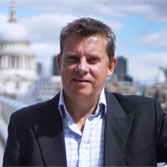Marvellous Manchester, a year on from the 2017 Arena attack...

Today is the first anniversary of the apalling 2017 attack, in which 22 people were killed when a bomd was detonated at the end of a concert at the Manchester Arena. Last July I visted the city as part of a press event designed to showcase the best of the city and its people, and the following article first appeared in the Australian travel suppliment, Escape, on December 6th. I'd not really been a fan of Manchester before this trip, but it surprised me with it's big city feel, liveability and sense of community.
***

It’s raining as I arrive in Manchester – sheeting it down from a pewter-grey sky and soaking me as I bundle into the taxi. I comment on the deluge, and like everyone else I was to meet in the city, the driver had a good line in cheery weather-related banter. “ “Yes it rains here, but not as much as some other places,” he said with a smile. “I’ve checked you know! And we get a few Arab tourists who come here to cool off and see rain -- they love our changeable weather.”
The dampness prevented cotton from snapping during weaving apparently, in the days when Manchester was the world’s first industrial city and was known as Cottonopolis - producing 85% of the globe’s finished cotton in the 1840s. The legacy is redbrick textile warehouses scattered across the city, cast iron kerb edges that didn’t crack under heavy textile carts, and household linen still called ‘Manchester’ in Australia to this day.
The cotton trade has long since vanished from the city – and now Manchester is more famous for football, a sort of ‘Socceropolis’ with its two world-class teams – United and City – battling it out for the top titles and trophies. Forbes calculates the combined value of the two clubs at more than $7 billion, with annual revenues of about a one and a half billion – roughly the same as the UK’s entire fishing industry.

It’s still bucketing it down when I hop on a yellow and black tram to Manchester United’s Old Trafford ground. Stadium tours run every ten minutes and my group include excited fans from Singapore, Toronto, Bremen and St Lucia. The empty ground is smaller and more worn than I imagined - but it’s great to see the players’ changing rooms, the tunnel to the pitch and Mourinho’s dugout.
Players are big noises in the city as you might expect. Gary Neville and Ryan Giggs opened Hotel Football next to the Old Trafford Stadium, the fine diner Rabbit in the Moon (‘space age Asian’), and are hatching a plan to turn the former central police station into a luxury hotel. Rio Ferdinand is part owner of swanky Italian Rosso.
I instead opt for an evening at Bongo’s Bingo and queued around the corner to enter the beautiful Albert Hall, the former Methodist hall built in 1908. The crowd of 100% is astonishingly up-for-it from the start, and in between the bingo – with prizes including a Space Hopper, a cardboard politician and a bottle of Amaretto – the maestro called “Dancing Queen number seventeen”, “Staying Alive number five” and so on. All are cues for predictable mini raves and table dancing.

A bingo audience and atmosphere like you have never seen. Photo My Bathroom Wall
Football and bingo have working class roots and this earlier spirit is captured in the People’s History Museum. Like every other museum I visit in the city, it’s free, and it’s where I take my hangover the next morning. It’s a non-political museum that’s very political, highlighting as it does the 1819 Peterloo Massacre, the 1833 Tolpuddle Martyrs, and the 1984 miners’ strike. I also learnt that Emily Pankhurst was born in Manchester and her former home (now the Pankhurst Centre museum) is where the Suffragettes movement was founded.
You wouldn’t know it now, what with the snazzy glass tower of the Football Museum (with showy internal funicular), the futuristic Armani shop and the glass-fronted Selfridges, but Manchester was rather down at heel in the 80s and 90s. Back then it was said that only 250 people actually lived in the city centre. It’s now up to 20,000.
The slump in fortunes didn’t do any harm to the city’s music scene though; in fact the deprivation may just have helped it according to local music guide Sue McCarthy, who shows me the vinyl shops on Oldham Street, the once shadowy square where Northern Soul began, and the location of the Hacienda – a legendary music venue that closed in 1997 and has since been obliterated by the Hacienda Apartments.

At the dingy-looking alleyway entrance to Corbier’s, a man not unacquainted with daytime drinking said good-naturedly “Call in, call in; you may never come out!” The bar was opened by a former Man-U player in 1978. It has a corking jukebox, and is where the Happy Mondays first bumped into Bez - their maracas-playing mascot.
The bonhomie reminds me of two pasty lads I met in Sumatra wearing identical T-shirts printed with ‘This isn’t Manchester, this is the trip!’. Like other Mancunians, they were proud of their city, quick-humoured and swift with banter.
Next morning, after a brilliant bacon butty in Manchester’s Art Gallery café, I find myself staring at a screen of white noise while listening to ‘Decades’ by Joy Division. The ‘True Faith’ exhibition is inspired by the band, and New Order as it became after its lead singer Ian Curtis committed suicide aged 23. The exhibition includes installations, album covers, and Curtis’ original hand written lyrics for ‘Love Will Tear Us Apart’.

Manchester has produced musical talent in spades. It started with the Hollies, Herman’s Hermits and Freddie and the Dreamers in the 60s. Then in the 80s and 90s came Joy Division and New Order, The Smiths, Stone Roses, Simply Red, Swing Out Sister, James, Happy Mondays, Chemical Brothers, Oasis, and Take That.
The Northern Quarter is where it’s at these days. It’s not exactly pretty – with red brick buildings and wrought iron staircases that occasionally stand in for New York in films - but the city’s bohemian enclave is where you’ll find provocative street art, trendy vintage shops, and even an Icelandic coffee café called Takk.
On my last afternoon I went traditional and walked along the Castlefield canals, past crowds of outdoor summer drinkers at ‘Dukes 92’ and Barca, and end up sitting in the warm sunshine by Cathedral Square with a pint of ale beside the 16th century Old Wellington.
Out of the blue it starts to rain, but along with everyone else I scoop up my glass and joined the friendly indoor crush. What might have been a day-spoiling event in many cities was over in 10 minutes. Then we all take our drinks outside again as though nothing had happened.
***
 |
Manchester makes for an interesting city break, plus of course the city attracts a lot of football tourism both for the matches, and also for the football heritage. Within daytripping distance of Manchester is Blackpool, Chester, Buxton, and the Peak Disctrict. And a 90-minute drive away is the gorgeous, and famously damp scenery of the Lake District. |
 |
Manchester Airport is 14 kilometres south-west of the city and handled 27.8 million passengers in 2017. There are flights to Manchester from across the UK and Europe, plus a growing number of long haul routes, including Hong Kong with Cathay Pacific, Dubai with Emirates, Beijing with Hainan Airlines, Singapore and Houston with Singapore Airlines. Upcoming new routes include Addis Ababa with Ethiopian Airlines (starting December 1 2018), and Mumbai with Jet Airways (from November 5 2018). |
 |
The best time to visit the Cape Town area is during the dry summer months from October to April, with January and February being the warmest with an average of 25°C. Temperatures will likely be below 20 with more than 10 days rain per month in May-September. |
 |
See Visit Manchester |





